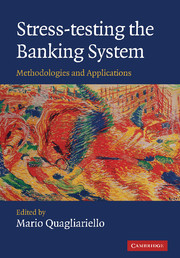Introduction
Published online by Cambridge University Press: 18 December 2009
Summary
'Excuse me!
Ladies and gentlemen,
forgive me for appearing alone.
I am the Prologue'.
R. Leoncavallo, I Pagliacci, 1892Stress tests are quantitative tools used by banking supervisors and central banks for assessing the soundness of financial systems in the event of extreme, but still plausible, shocks (macroeconomic stress tests). They are also an important management instrument for banks since they provide financial institutions with useful indications on the reliability of the internal systems designed for the measurement of risks (microeconomic or prudential stress tests). Under the new Basel Accord on banks' capital adequacy the presence of sound stress-testing methodologies is a prerequisite for the adoption of the advanced methods for the quantification of minimum capital requirements.
Until the first half of 2007, interest in stress-testing had been circumscribed to practitioners, i.e., risk managers, central bankers and financial supervisors. Since then, the global financial system has been hit by deep turbulences and all major economies have been affected by high volatility in financial markets, deterioration of the value of portfolios, widespread repricing of risk and severe liquidity drying up. It has been pointed out that the severity of the crisis has been largely due to its unexpected nature and that a more extensive and rigorous use of stress-testing methodologies would have probably helped to alleviate the intensity and repercussions of the turmoil. In such a context, stress tests have become a key issue in policy discussions and a regular subject for newspapers' columnists.
- Type
- Chapter
- Information
- Stress-testing the Banking SystemMethodologies and Applications, pp. 1 - 4Publisher: Cambridge University PressPrint publication year: 2009



